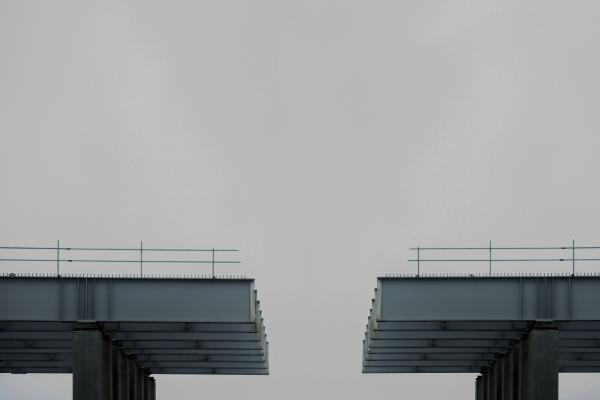By Beena Chester, Director of Business Engagement, Resilience First
Resilience First was delighted to welcome the National Infrastructure Commission to a candid roundtable dinner discussion with a cross-sector representation of senior executives from our business membership base, including operators, to look at ways to build the resilience of the UK’s national infrastructure.
Investing in resilient infrastructure has the potential to generate long-term benefits for society in terms of inclusive economic growth, improvements to wellbeing as well as helping to accelerate key national policy priorities such as achieving climate adaptation and net zero targets, building more equitable access, and protecting biodiversity.
However, delivering this effectively is an enormous challenge. From varying government policy priorities to regulatory pressures, to short term financial reporting cycles and of course, moments of strong local community opposition, can all lead to project delays, cost overruns and even cancellations or diversions of the required investment needed to deliver resilient infrastructure.
Set against this backdrop, Resilience First was delighted to chair a discussion on ways to incentivise and encourage the required action to accelerate the resilience of our national infrastructure.
The Challenge
We all have to accept that we now operate in a highly volatile world which is interdependent, interconnected and complex. In recent years, we have seen different types of crises compounding and challenging the way in which we operate, live and work - from the pandemic, energy and cost-of-living crises to the growing effects of climate change, consequences of cyberattacks and even the realisation of the world’s dependency on the Suez Canal for most of its supply needs when blocked by Ever Given in 2021.
This growing uncertainty of risks is unravelling a multitude of issues impacting operations and services, and this trajectory is set to continue increasing, eroding the sense of stability experienced since the late 1980s, when whole generations were brought up with little or no threats.
Historic under investments is causing system stresses as we experience vast growth in urbanisation. There is also a lack of diversity and capacity across our infrastructure which is impeding our ability to be resilient.
Short termism
Furthermore, the long-term vision and investment needed to build in resilience is being impacted by the low probability of these types of disruption as well as short term financial reporting pressures.
Misunderstandings
Resilience itself is misunderstood and often seen as optional. It is more commonly seen as a slow-moving risk and not an immediate threat. Fundamentally, sustainability and climate resilience doesn’t mean anything to anyone –even those in power.
On the other hand, organisations have a better appreciation for risk which is managed differently through risk registers to guide their strategies and investment decisions.
Solo thinking
In our current operating environment, regulatory bodies are not driving a common resilience strategic agenda that takes into account a whole systems approach across the entire CNI spectrum.
Financial pressures
Existing economic regulatory requirements simply look for the most economic base outcome, requiring the CNI in the UK to be replaced and repaired, and not encouraged to invest in more resilient substitutes – however, low-cost solutions are not necessarily the right solutions.
So, how can we prevent inconveniences from turning into harm when resilience is unknown, not measured and therefore not exposed? What does good resilience look like? How much do we want? What is the true cost and return of climate adaptation? How much are we willing to pay for it?
The Opportunity
The growing consequence of the challenge is creating a paradigm shift in policy discussions towards the importance of resilience and a move away from traditional dry technical thinking, producing an opportunity to look at low hanging fruits to drive resilience.
Clearer definitions and understanding
The risk profile is going up – thanks to the frequency of extreme weather events. This is leading to the better understanding of emerging gaps in our systems. For instance, how can we build in long term flexibility and resilience or strategic reserves through renewable energy?
There’s a growing appreciation of interdependencies in our system and resulting cascading failures and therefore, the need for a coming together solution that looks at the systemic assets of interdependencies across sectors and systems – with no more silo thinking. Thereby, creating a need for a cross infrastructure resilience system.
Technology could be leveraged to drive resilience with data sharing across sectors informing our plans.
These could be underpinned by resilience targets, which are driven by policy setting standards, that are valued by government or regulators, and that are based on publishing resilience outcomes and expected levels of resilience standards. With policies requiring action together now and not waiting for 2030 - and with a focus on pace not perfection.
Making the economic case
Long term strategies across infrastructure needs should also be considered alongside economic drivers – including better articulation of the cost and impact of non-action. Resilience needs to become an economic question.
The insurance sector also has a role in incentivising resilient behaviours. Currently, we are seeing some climate risks becoming uninsurable.
Changing attitudes
There needs to be a change in mindsets from risk to resilience. Global south mindsets are different, where nations are more accustomed to resilient behaviours, as witnessed in Cape Town, when the whole city pulled together as drought day zero approached.
We should make the public part of the solution. Afterall, society understands risk and the public drive votes which drive behaviours. Better public communications can drive better understanding for the need for and price of resilience, with a focus on “How will it affect me?”. Expressing resilience value in terms of what consumer spend and presenting resilience action as an opportunity – maybe even as a discount between the consumer and the utility provider.
Collaboration
There’s an opportunity for the private sector collaboratively to do more intelligently across mitigation and adaptation. Lessons learnt from other SROs such as the financial sector should be considered. A resilience defence budget could be created.
The planning process needs reforming to allow for resilience infrastructure investment.
There needs to be collective thinking and action from everyone to address this, drawing on partnerships and creating a masterplan.
Finally, not adapting is a missed market opportunity – as resilience not only acts as a safeguard but also drives innovation.


